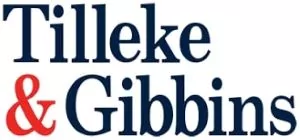In recent years, Thailand has witnessed significant developments in its personal finance sector, particularly in alternative lending options. This article explores two key concepts in the Thai financial landscape: nano finance and personal loans. These alternative lending models, regulated by the Bank of Thailand (BOT), aim to provide more accessible financial services to individuals and small entrepreneurs who might have limited access to traditional funding sources.
Nano Finance: Empowering Small Entrepreneurs
The nano finance scheme under the BOT's supervision is designed to provide funding to small entrepreneurs who might have limited access to traditional financial resources. One of the key features of this scheme is the ability of licensed nano finance providers to use alternative data in assessing loan applicants' ability to repay (information-based lending).
To implement this approach, nano finance providers must have an internal policy on credit approval that supports:
- Identifying scope and processes for utilizing alternative factors or technologies in determining debt repayment capacity, credit line limits for each loan applicant and total credit limits, and acceptable debt repayment targets;
- Having resources and personnel with sufficient knowledge, capability, experience, and expertise to operate efficiently and effectively, as well as clear checks and balances;
- Establishing guidelines for selecting and analyzing factors or financial models to evaluate or predict loan applicants' ability and willingness to repay;
- Having an internal sandbox to test key success factors of the selected factors or models; and
- Having a process for monitoring and reviewing the application of the selected factors or models in assessing debt repayment capability.
This approach allows nano finance providers to make more informed lending decisions based on a broader range of data, potentially increasing access to finance for small entrepreneurs who may not have traditional credit histories or collateral.
Personal Loans
The personal loan scheme under BOT supervision aims to solve loan-shark problems by providing the public with access to regulated personal loan providers. Unlike the nano finance scheme, personal loans offer a broader scope of lending purposes and credit limits, which can vary depending on lending objectives and collateral. The goal is to make these personal loans more accessible and manageable for borrowers.
To encourage the implementation of technology and the use of alternative data in approving loans, the BOT introduced the "digital personal loan" category with relaxed requirements and rules. To qualify as a digital personal loan provider, businesses must:
- Use alternative data in assessing loan applicants' ability or willingness to repay according to their customized risk profile;
- Have a digital channel as the main outlet for paying and receiving repayment to create a digital footprint for future financial services. Examples include an automatic direct debit system and e-wallets; and
- Publish the applicable interest rate, penalty fees, fines, service fees, and other expenses, along with the loan amortization table, on a digital channel that customers can conveniently access.
Looking Ahead
The introduction of nano finance and digital personal loans represents a significant step forward in Thailand's alternative personal finance landscape. These developments aim to increase financial inclusion by providing more accessible lending options to individuals and small entrepreneurs who may have been underserved by traditional financial institutions.
For fintech companies and lending service providers operating in Thailand, these developments present both opportunities and challenges. Understanding the regulatory framework and leveraging technology to assess creditworthiness using alternative data could open up new market segments. However, businesses must also ensure they have robust systems in place to comply with BOT regulations and manage risk effectively.
As the alternative personal finance sector in Thailand continues to evolve, businesses that stay informed about regulatory changes and technological advancements will be better positioned to capitalize on the growing opportunities in this dynamic sector while contributing to greater financial inclusion.
The content of this article is intended to provide a general guide to the subject matter. Specialist advice should be sought about your specific circumstances.



